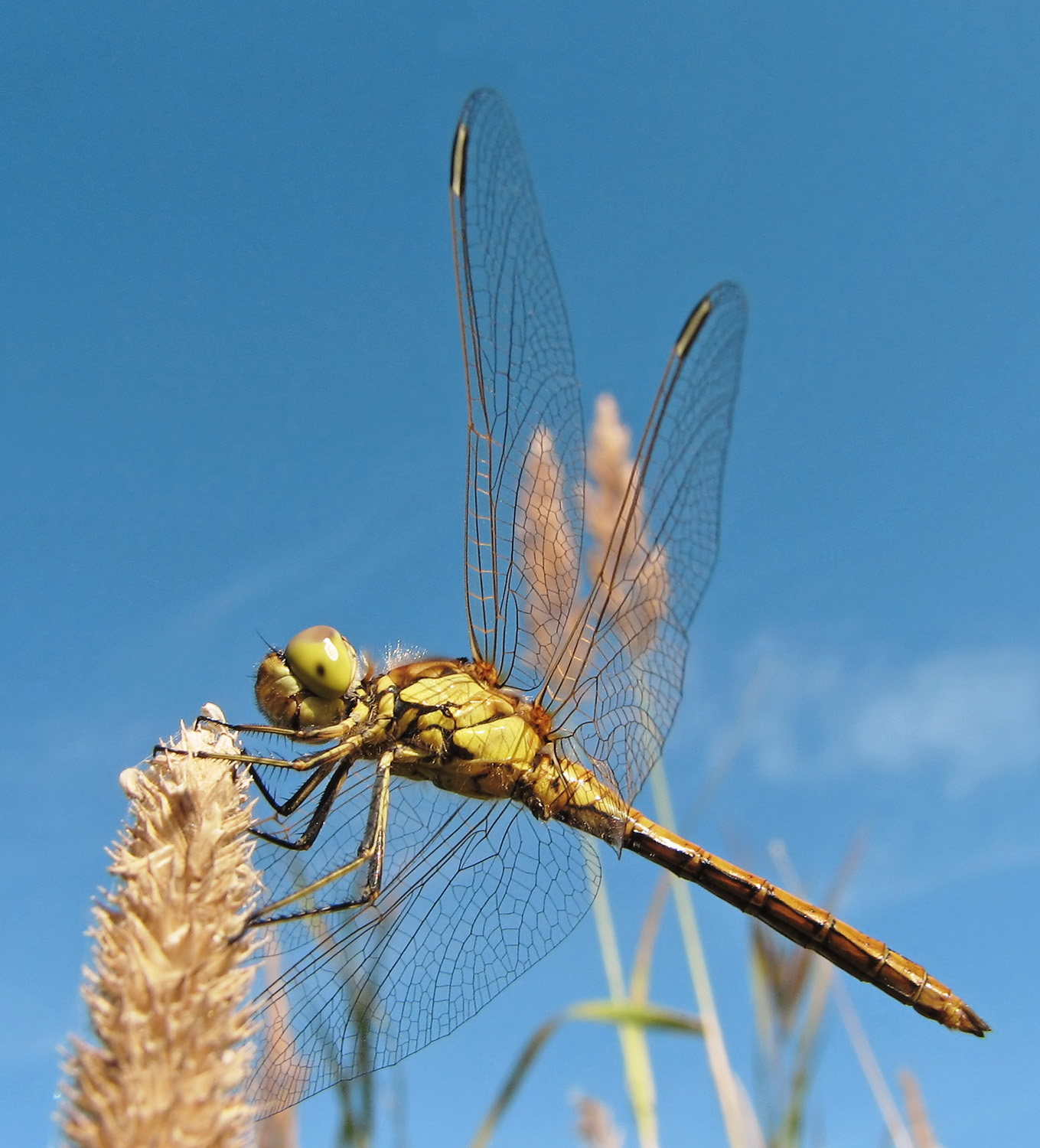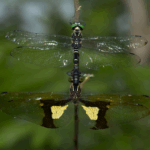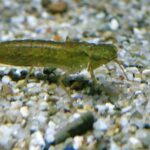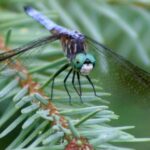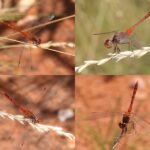Dragonflies are fascinating insects that belong to the order Odonata, which also includes damselflies. They are known for their remarkable flying abilities, intricate body structures, and vibrant colors. There are over 5,000 species of dragonflies worldwide, each exhibiting unique characteristics and color variations. This article explores the different species of dragonflies and the diversity in their colors.
Dragonflies are remarkable insects known for their agility, vibrant colors, and predatory skills. With over 5,000 species worldwide, each dragonfly species possesses unique characteristics that differentiate them from one another. This article highlights the distinct features of various dragonfly species, focusing on their physical traits, behaviors, and habitats.
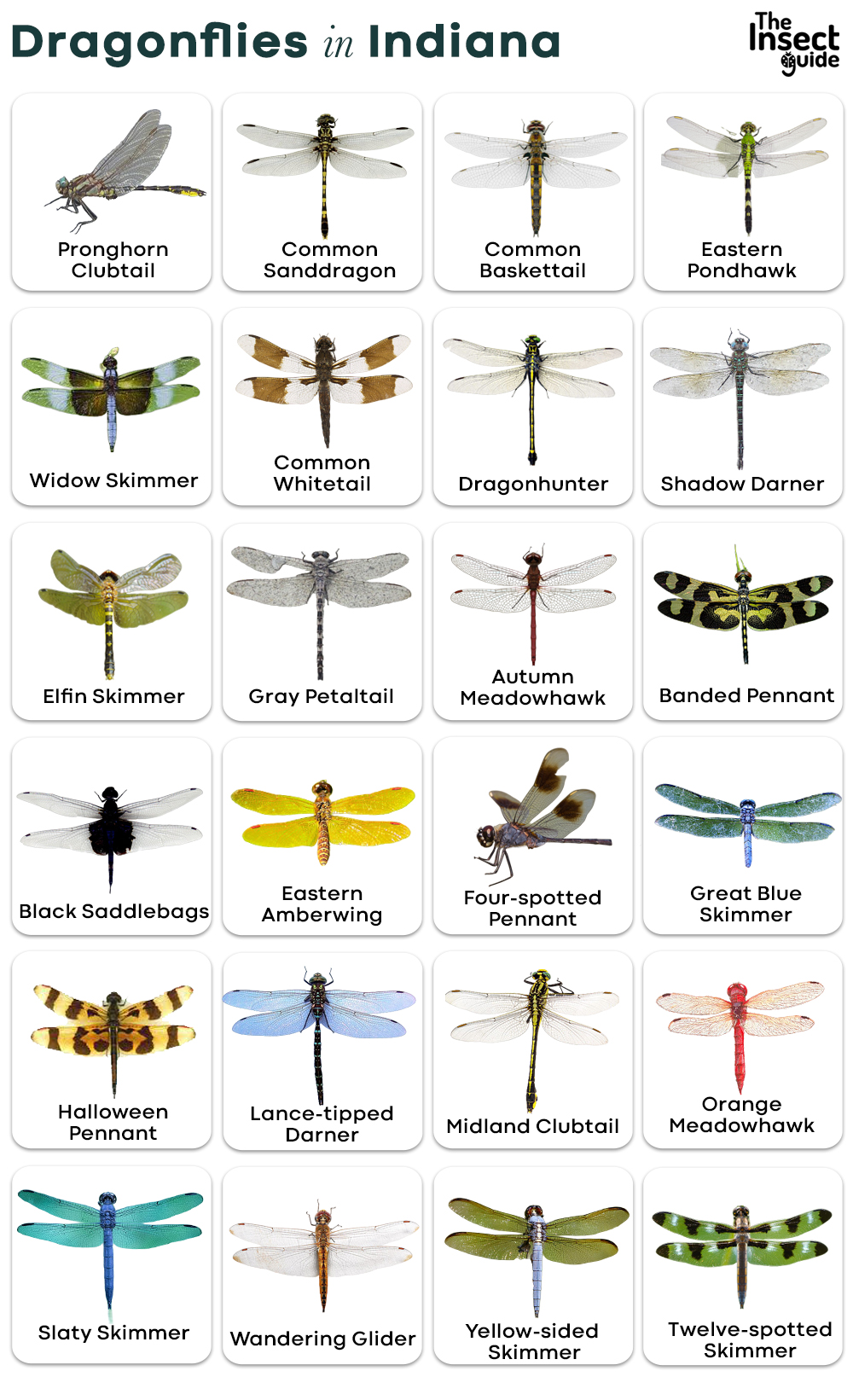
General Characteristics of Dragonflies
Before diving into specific species, it’s essential to understand the general characteristics that define dragonflies:
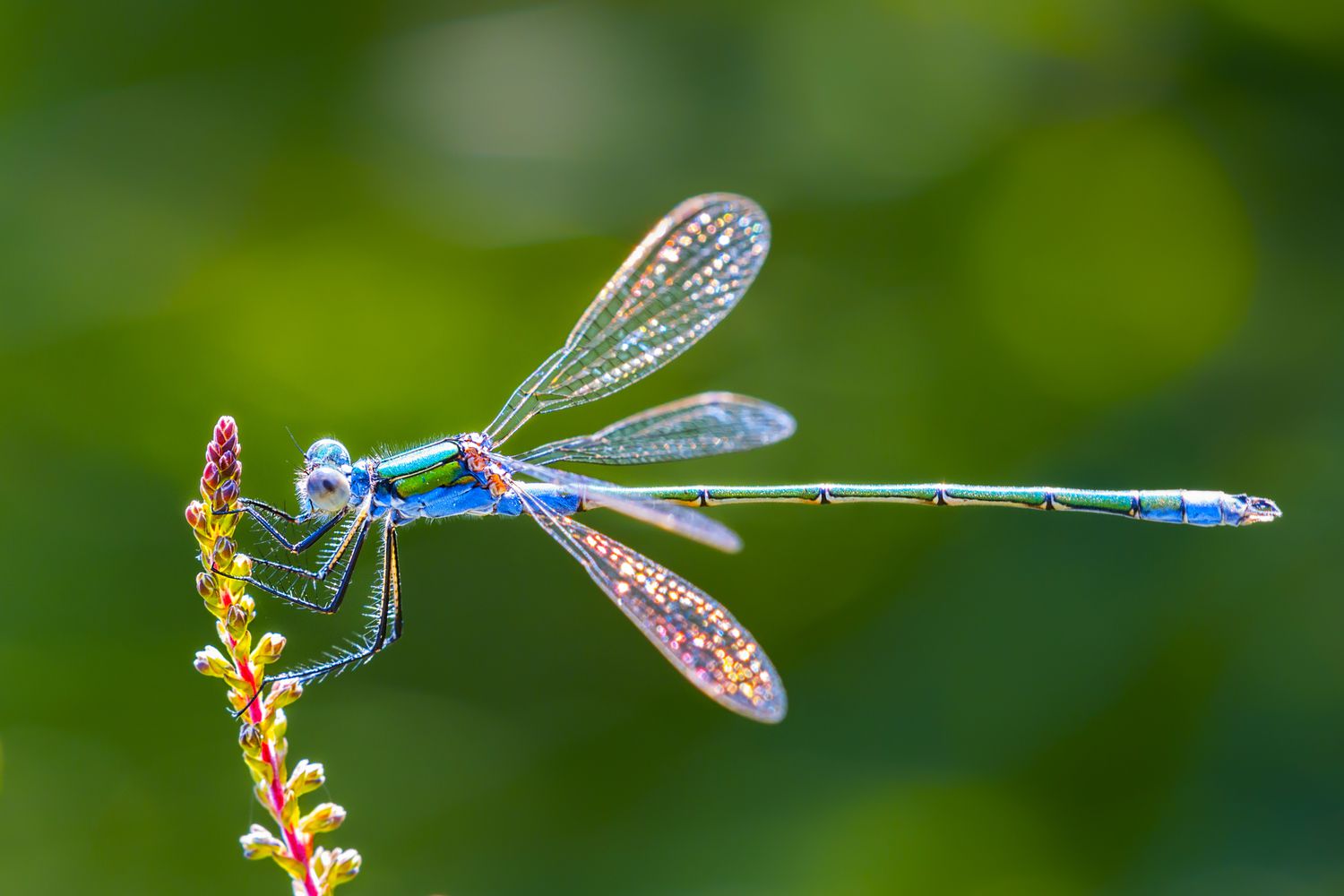
- Body Structure: Dragonflies have elongated bodies divided into three main segments: the head, thorax, and abdomen. The thorax is robust, supporting two pairs of wings that are intricately veined and typically transparent.
- Eyes: Dragonflies possess large, multifaceted compound eyes that provide nearly 360-degree vision. These eyes are made up of thousands of individual lenses, allowing them to detect movement and color effectively.
- Wings: They have two pairs of wings that can operate independently, enabling exceptional maneuverability. This feature allows dragonflies to hover, fly backward, and change directions swiftly.
- Predatory Behavior: Both nymphs and adult dragonflies are fierce predators. Nymphs are aquatic and hunt small fish and other insects, while adults capture flying insects mid-air.
Conclusion
Dragonflies are a diverse and captivating group of insects, each species exhibiting unique characteristics that contribute to their ecological roles. From their striking colors to their predatory behaviors, dragonflies play vital roles in maintaining the balance of ecosystems. Understanding the unique traits of different dragonfly species enhances our appreciation for these remarkable insects and the environments they inhabit. As we continue to study and observe dragonflies, we gain valuable insights into their behaviors, habitats, and the importance of conserving their ecosystems.
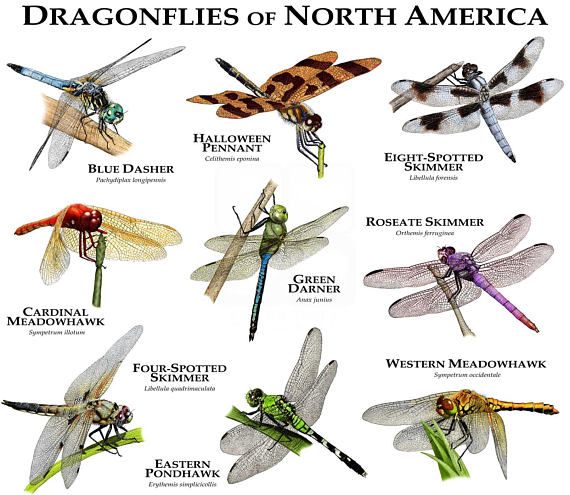
What are the unique characteristics of each dragonfly species
Notable Dragonfly Species and Their Unique Traits
- Green Darner (Anax junius)
- Physical Traits: This species is one of the largest dragonflies in North America, with a bright green thorax and a blue abdomen. Males are more vibrant than females, which tend to have a more subdued coloration.
- Behavior: Green darners are known for their migratory behavior, traveling long distances between breeding and wintering grounds. They are also skilled hunters, capable of catching prey in mid-flight.
- Habitat: They are commonly found near ponds, lakes, and marshes.
- Scarlet Skimmer (Crocothemis servilia)
- Physical Traits: Males display a striking bright red body, while females are more muted, often brown or yellowish. This vivid coloration makes them easily recognizable.
- Behavior: Scarlet skimmers are known for their territorial behavior, often seen perching prominently to guard their territory.
- Habitat: They prefer sunny, open areas near water bodies, such as ponds and slow-moving streams.
- Blue Dasher (Pachydiplax longipennis)
- Physical Traits: Males have a distinctive blue abdomen with greenish-yellow markings, while females are generally more subdued in color.
- Behavior: Blue dashers are often seen hovering around their territories and are known for their aggressive behavior towards intruders.
- Habitat: They thrive in a variety of habitats, including ponds, lakes, and marshes.
- Common Whitetail (Plathemis lydia)
- Physical Traits: This species is characterized by its white abdomen with black markings. Males are more striking than females, which have a browner appearance.
- Behavior: Common whitetails are known for their perching habits, often resting on low vegetation near water.
- Habitat: They are commonly found in wetlands, ponds, and along the edges of streams.
- Eastern Pondhawk (Erythemis simplicicollis)
- Physical Traits: Males are bright green, while females are brown with green markings. This sexual dimorphism is a notable characteristic of the species.
- Behavior: Eastern pondhawks are aggressive predators, often seen hunting other insects in flight.
- Habitat: They prefer habitats with abundant vegetation, such as ponds and marshes.
- Common Green Darner (Anax junius)
- Physical Traits: Similar to the Green Darner, this species has a bright green thorax and a blue abdomen, but it is slightly smaller.
- Behavior: Known for their migratory patterns, they can travel long distances and are often seen in large swarms.
- Habitat: They are typically found near freshwater sources like lakes and ponds.
- Dragonhunter (Hagenius brevistylus)
- Physical Traits: This species is notable for its large size and robust build, with a dark body and distinctive yellow markings.
- Behavior: Dragonhunters are unique in their hunting strategy, often preying on other dragonflies.
- Habitat: They are found in wooded areas near water bodies.
- Twelve-spotted Skimmer (Libellula pulchella)
- Physical Traits: This species features a distinctive pattern of twelve black spots on its wings, making it easily identifiable.
- Behavior: Twelve-spotted skimmers are known for their territorial displays and can often be seen patrolling their territory.
- Habitat: They inhabit ponds, marshes, and slow-moving streams.
- Black Saddlebags (Tramea lacerata)
- Physical Traits: This species is recognized by its dark body and the distinctive black patches on its wings.
- Behavior: Black saddlebags are known for their migratory behavior and are often seen in large groups.
- Habitat: They prefer open areas near water, such as lakes and ponds.
- Widow Skimmer (Libellula luctuosa)
- Physical Traits: Males have a striking black and white coloration, while females are more brownish with similar patterns.
- Behavior: Widow skimmers are known for their unique perching habits, often resting on low vegetation.
- Habitat: They are commonly found in wetlands, ponds, and marshes.
Overview of Dragonfly Species
Dragonflies are divided into several families, with each family containing numerous species. The main families of dragonflies include:
- Aeshnidae (Hawkers): This family includes large dragonflies known for their swift flight. Common species include the Green Darner and the Common Hawker.
- Libellulidae (Skimmers): Skimmers are among the most common dragonflies. They are characterized by their broad bodies and are often seen resting on vegetation. Notable species include the Twelve-spotted Skimmer and the Eastern Pondhawk.
- Gomphidae (Clubtails): These dragonflies have distinctive club-shaped tails. They are often found near rivers and streams. Examples include the Dragonhunter and the Common Clubtail.
- Corduliidae (Emeralds): Emeralds are known for their metallic green or bronze bodies. They are agile flyers and can be found near freshwater habitats. The Spotted Emerald is a well-known species in this family.
- Calopterygidae (Broad-winged Damselflies): Although technically a family of damselflies, some species are often mistaken for dragonflies due to their size and coloration. The Ebony Jewelwing is a prominent example.
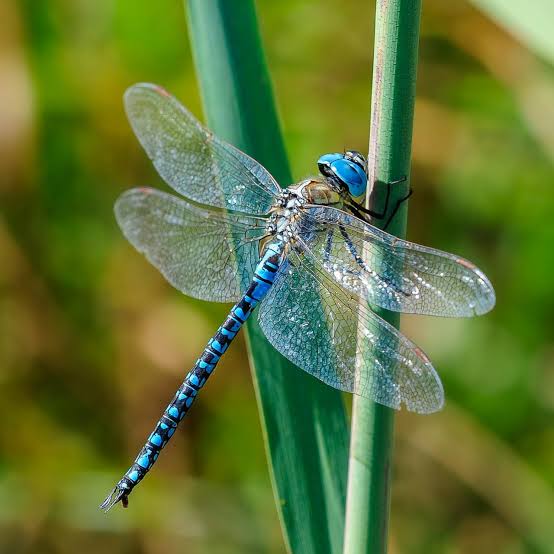
Color Variations in Dragonflies
The colors of dragonflies can vary significantly between species and even within the same species. These variations are influenced by factors such as genetics, age, and environmental conditions. Here are some common color patterns observed in dragonflies:
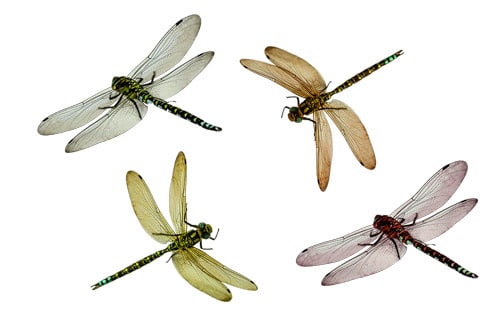
- Metallic Colors: Many dragonflies, particularly those in the Emerald family, exhibit striking metallic hues. These colors can range from bright greens to deep blues and are often a result of structural coloration rather than pigments.
- Bright Colors: Some species display vibrant colors, such as the Scarlet Skimmer, which features bright red bodies. These vivid colors can serve as a warning to predators or play a role in attracting mates.
- Camouflage: Certain dragonflies have evolved colors that help them blend into their surroundings. For example, the Green Darner has a greenish-brown coloration that allows it to hide among plants.
- Sexual Dimorphism: In many species, males and females exhibit different color patterns. For instance, male Eastern Pondhawks are bright green, while females are more subdued in color, often displaying a brownish hue.
- Age and Maturity: The coloration of dragonflies can change as they mature. Younger dragonflies may have different colors compared to their adult forms, often becoming more vibrant as they reach maturity.
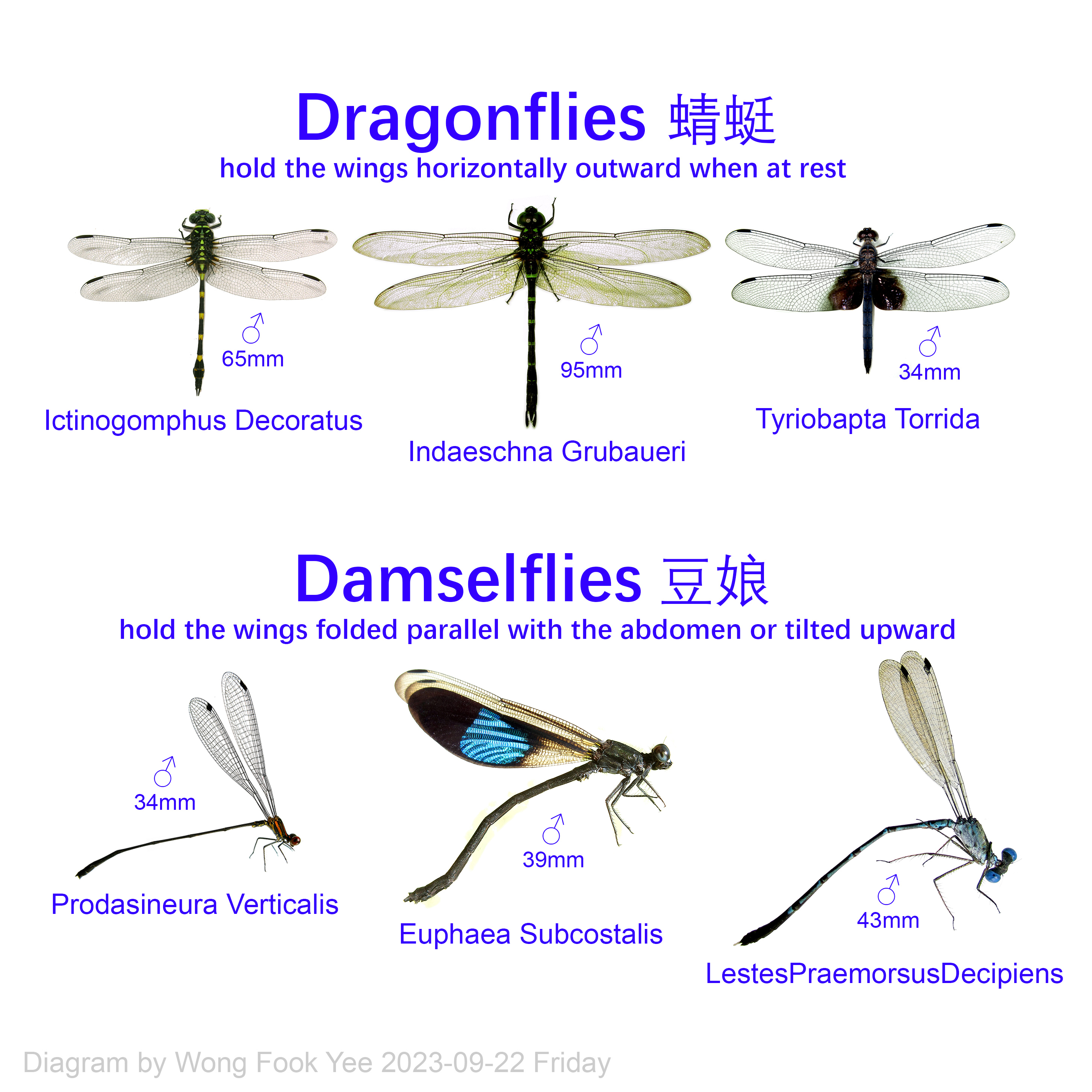
Notable Species and Their Colors
Several dragonfly species are particularly well-known for their striking colors:
- Green Darner (Anax junius): This large dragonfly is easily recognizable by its bright green thorax and blue abdomen. It is one of the most common dragonflies in North America.
- Scarlet Skimmer (Crocothemis servilia): This species is known for its brilliant red coloration, particularly in males. The females are less vibrant, displaying a more subdued yellow-brown color.
- Blue Dasher (Pachydiplax longipennis): Males of this species have a distinctive blue abdomen with greenish-yellow markings, while females are more muted in color.
- Common Whitetail (Plathemis lydia): This dragonfly has a characteristic white abdomen with black markings. Males are more striking, while females have a more brownish appearance.
- Eastern Pondhawk (Erythemis simplicicollis): Males are bright green, while females are brown with green markings. This sexual dimorphism is a key feature of the species.
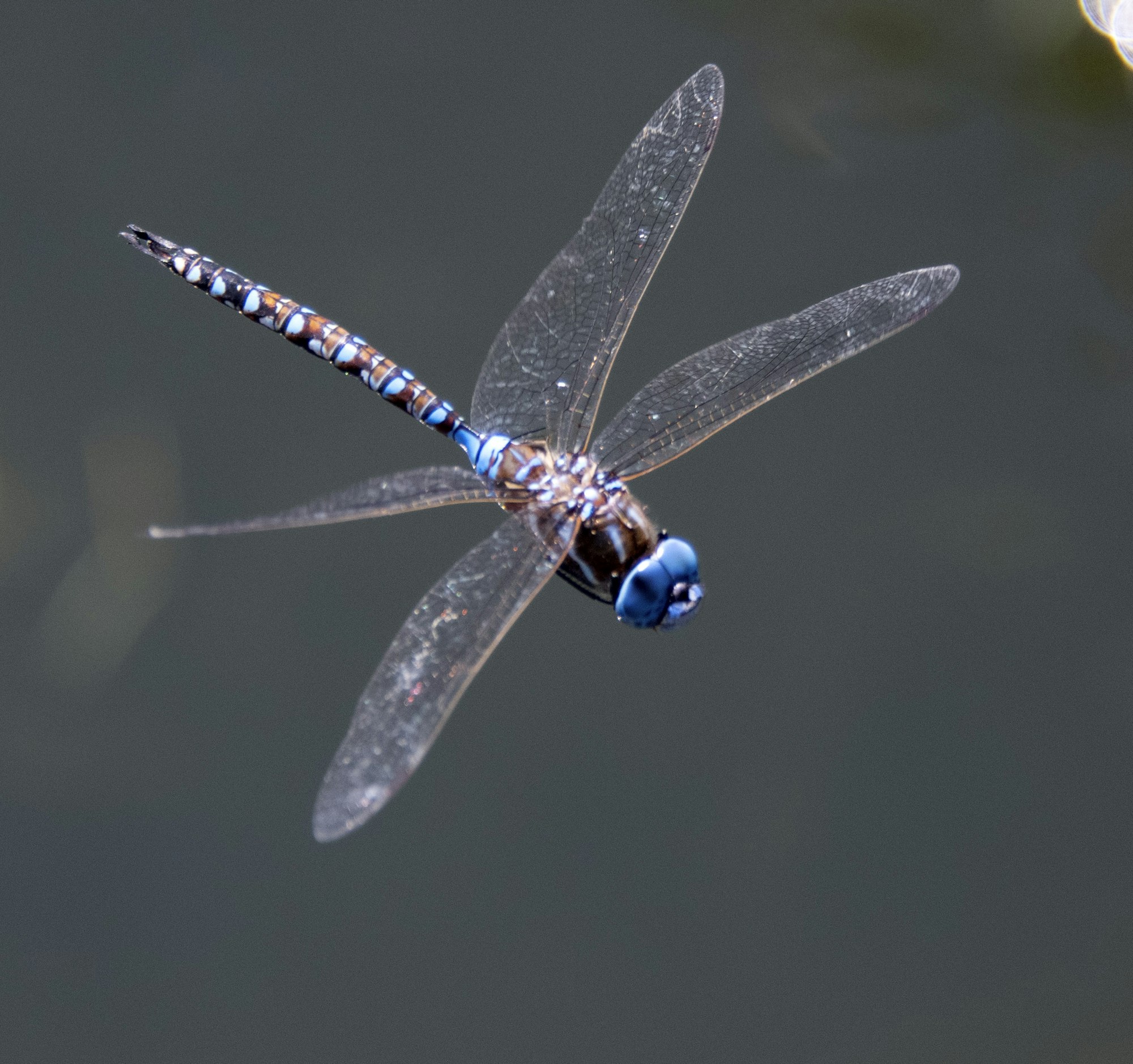
Conclusion
Dragonflies are a diverse group of insects with a wide range of species and colors. Their vibrant hues and unique patterns not only contribute to their beauty but also play important roles in their survival and reproduction. Understanding the different species of dragonflies and their color variations enhances our appreciation for these remarkable creatures and their role in the ecosystem. As we continue to study and observe dragonflies, we gain valuable insights into their behavior, ecology, and the environmental health of the habitats they inhabit.

